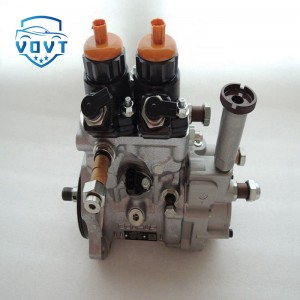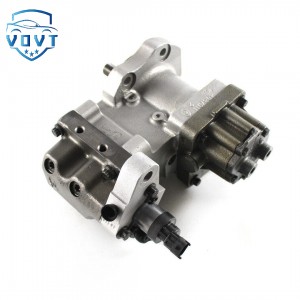Diesel Fuel Injection Pump 1G777-51011 Engine Auto Engine Part
products description
| Reference Code | 1G777-51011 |
| MOQ | 1 PCS |
| Certification | ISO9001 |
| Place of Origin | China |
| Packaging | Neutral packing |
| Quality Control | 100% tested before shipment |
| Lead time | 7~15 working days |
| Payment | T/T, Western Union, Money Gram, Paypal, Alipay, Wechat |
Application of 3D Printing Technology in the Prototype Development of Small Oil Pumps
Abstract
With the trend toward lightweight and high-efficiency mechanical systems, the design and manufacturing of oil pumps—critical components in lubrication and hydraulic circuits—have attracted increasing attention. Traditional prototype development of oil pumps is time-consuming and costly. In contrast, 3D printing (additive manufacturing) enables rapid prototyping and structural innovation due to its high geometric flexibility and design freedom. This paper investigates the application of 3D printing technology in the prototype development of a small gear oil pump, focusing on design strategy, process parameters, and performance evaluation. The results show that applying 3D printing in prototype development significantly shortens the design-validation cycle, enhances flow field optimization, and reduces development costs while maintaining reliable pump performance.
1. Introduction
Small oil pumps are widely used in automotive lubrication systems, fuel delivery, and hydraulic control devices. Conventional prototype development typically depends on CNC machining or casting molds, which require long lead times and high production costs. Such limitations make it difficult to rapidly verify new design concepts or perform iterative optimization. 3D printing technology, characterized by its “design-to-manufacture” capability, provides an efficient alternative for fabricating complex pump structures without the need for dedicated tooling. This study explores how additive manufacturing can be used to accelerate the prototyping process and improve the internal hydraulic design of small oil pumps.
2. Design and Manufacturing Process
A small external gear oil pump was selected as the research object. The prototype components—including the pump housing, gear pair, and end cover—were fabricated using Selective Laser Melting (SLM) with 316L stainless steel powder. Three-dimensional CAD modeling was performed to construct the pump geometry, and topology optimization was applied to the inlet, outlet, and gear meshing regions to minimize flow resistance and reduce material usage.
The main process parameters for SLM were:
-
Laser power: 250 W
-
Scanning speed: 900 mm/s
-
Layer thickness: 30 μm
After printing, the parts underwent solution heat treatment and surface polishing to improve density and reduce surface roughness. The dimensional accuracy and surface finish were measured to ensure assembly compatibility and sealing performance.
3. Performance Testing and Analysis
The printed prototype was tested on a dedicated oil pump performance bench to measure pressure, flow rate, and volumetric efficiency. At a rated speed of 3000 rpm, the pump achieved a maximum outlet pressure of 6.2 MPa and a volumetric efficiency of over 90%, which is comparable to traditionally machined prototypes.
Computational Fluid Dynamics (CFD) analysis was performed to investigate the internal flow characteristics. The results revealed that the optimized 3D-printed flow channel effectively reduced local vortex formation and improved flow uniformity within the pump cavity. Moreover, the prototyping process—from initial CAD modeling to functional testing—was completed within five days, demonstrating a significant reduction in development time compared to conventional methods, which typically require several weeks.
4. Conclusions
This study demonstrates the feasibility and advantages of applying 3D printing technology to the prototype development of small oil pumps. The SLM-based fabrication approach allows for rapid iteration, structural optimization, and accurate validation of hydraulic performance. The combination of design freedom and short lead time makes additive manufacturing a valuable tool for concept verification and low-volume production of customized pump components. Future work will focus on material fatigue testing, surface finishing improvements, and hybrid manufacturing methods that integrate 3D printing with precision machining for enhanced dimensional accuracy and long-term reliability.

























